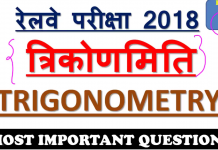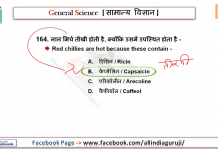Hello Guys, Today we are going to discuss a very important topic for jee Mains, advanced, NEET & AIIMS.
First of all, we are providing some important points about inductive effect.
(1) When an electron withdrawing (X) or electron-releasing (Y) group is attached to a carbon chain, polarity is induced on the carbon atom and on the substituent attached to it. This permanent polarity is due to displacement of shared electron of a covalent bond towards a more electronegative atom. This is called inductive effect or simply as I – effect.
(2) Carbon-hydrogen bond is taken as a standard of inductive effect. Zero effect is assumed for this bond. Atoms or groups which have a greater electron withdrawing capacity than hydrogen are said to have–I effect whereas atoms or groups which have a greater electron releasing power are said to have +I effect.
Applications of Inductive Effect
1. Effect on Bond lengths: Since the inductive effect leads to ionic character in the bond, the increase in –I effect usually decreases the bond length.
2. Dipole moment : Since, inductive effect leads to a dipolar character in the molecule, it develops some dipole moment in the molecule, which increases with the increase in the inductive effect.
CH3 – I, CH3 — Br, CH3 — Cl
Increasing dipole moment
3. Reactivity of alkyl halides: Alkyl halides are more reactive than the corresponding alkanes due to presence of C––X bond which is polar due to I effect, furthermore reactivity increases with increase of branching.
4. The acidity of carboxylic acid is due to inductive effect and resonance stabilisation of the carboxylate anion. Thus any group or atom, which is highly electronegative help in removing the hydrogen atom as proton and the group or atom which is less electronegative than C makes the removal of proton difficult.
Hence (–I) effect group increases acidic strength and (+I) effect groups decreases the acidic strength of carboxylic acid.
5. Basic strength of Amines : The basic character of amines is due to presence of unshared electron pair on nitrogen atom which accepts proton; the readiness with which the lone pair of electrons available for protonotion determines the relative strength of amines.
Due to +I effect of alkyl group, the nitrogen atom becomes rich in electrons with the result the lone pair of electron on nitrogen atom in amines is more easily available than in ammonia and hence generally, amines are stronger bases than ammonia. On the other (–I) groups or electron groups attached to nitrogen atom makes it difficult for protonation.
Note: Relative basic strength of amines is not in total accordance with the inductive effect, other factors like steric effect and stabilisation of cation by hydration also play important role to determine the basic strength of amines.
Due to electron – releasing group electron density is increased, hence basic nature is also increased and naturally acidic nature is decreased.
Watch our other useful stuff…
Inorganic Reaction Mechanism (Part-1)
First Point of Difference Rule | Organic Chemistry | Explained by IITian | Jee Mains, Advance | NEET
—————————————————————————
Oxides of Phosphorus | Tricks and Techniques | IIT Jee Mains, Advance | BITSAT | NEET & AIIMS
—————————————————————————
Electronegativity | Application & Problems | Explained by IITian | Jee Mains, Advance | NEET , AIIMS
———————————————————————-
Potassium Permanganate | d Block Chemistry | Jee Mains, Advance | NEET | BITSAT and AIIMS
———————————————————————————–
Neighbouring Group Participation | Tricks and Tech | IIT-Jee Mains, Advance | BITSAT | NEET & AIIMS
————————————————————————————
Carbocations and Carbanions | General Organic Chemistry | Explained by IITian | Jee Mains & Advance
———————————————————————————————–
Tricks for Qualitative Analysis | Cations | Jee Mains, Advance, NEET, BITSAT and AIIMS
——————————————————————————————–
Tricks to Remember p Block Reactions | Group 15 | Jee Mains, Advance, NEET, BITSAT & AIIMS
———————————————————————
Tautomerism in Organic Chemistry | Explained by IITian | Jee Mains, Advance, NEET, AIIMS & BITSAT
Thanks
Team IITian Explains
source













![CY_GATE_2019_PHYSICAL_SPECTROSCOPY_[ELECTRONIC_BASIC]_All IN ONE_[Short_Trick]_2018-19_PART_1ST - Videos](https://trends.edugorilla.com/wp-content/uploads/sites/8/2018/08/cy_gate_2019_physical_spectroscopy_electronic_basic_all-in-one_short_trick_2018-19_part_1st-218x150.jpg)


















![24 August 2018 – The Indian Express Newspaper Analysis हिंदी में – [UPSC/SSC/IBPS] Current affairs - Videos](https://trends.edugorilla.com/wp-content/uploads/sites/8/2018/08/a520-218x150.png)




U r awsm sir
Osm
1st view
1st Like
1 Comment
Just want to say……
You are one man army…
Awesome explainer, Kind, Guide, Ultimate depth knowledge, brilliant memory, enthusiast, energetic… like my bro…. Love u #MKA Sir
❤❤
No words for you. You are always best❤
Sir you are best…
Sir please ek video complex compound pr bnayiye jisme john teller distortion and orgel diagram ko smjhayiye aur transition kse hota h means allowed or forbidden.
Please sir please
It's urgent sir bhut pdha but khi se v bilkul smjh nh aa rha aur na hi teacher smjha pa rhe h..
Please sir it's urgent sir for me….
Sir ek week se Jada din ho Gaya math video q nehi upload huya??????
Thanks
Thankyou so much Sir 😊😊😊
Ooooooo sorry! Ok sir actually he is too much good like you.wish him a very soon recovery.
Sir I am little bit weak in ionic equilibrium and thermodynamics, what should I do for betterment???